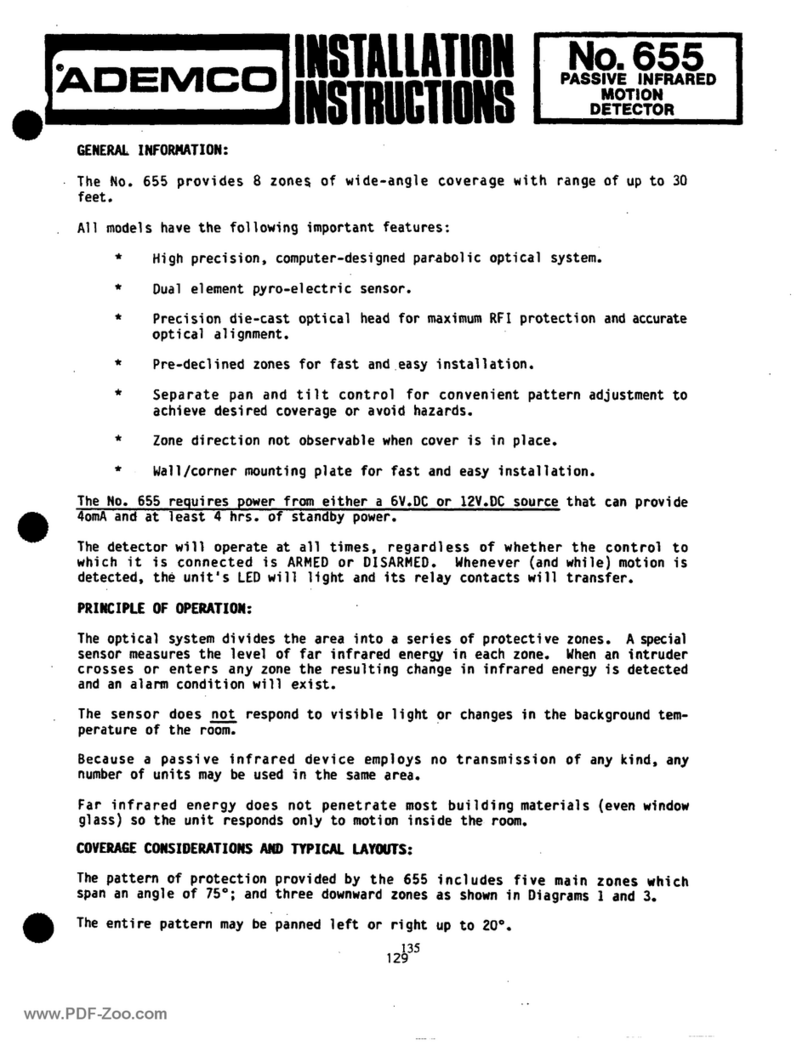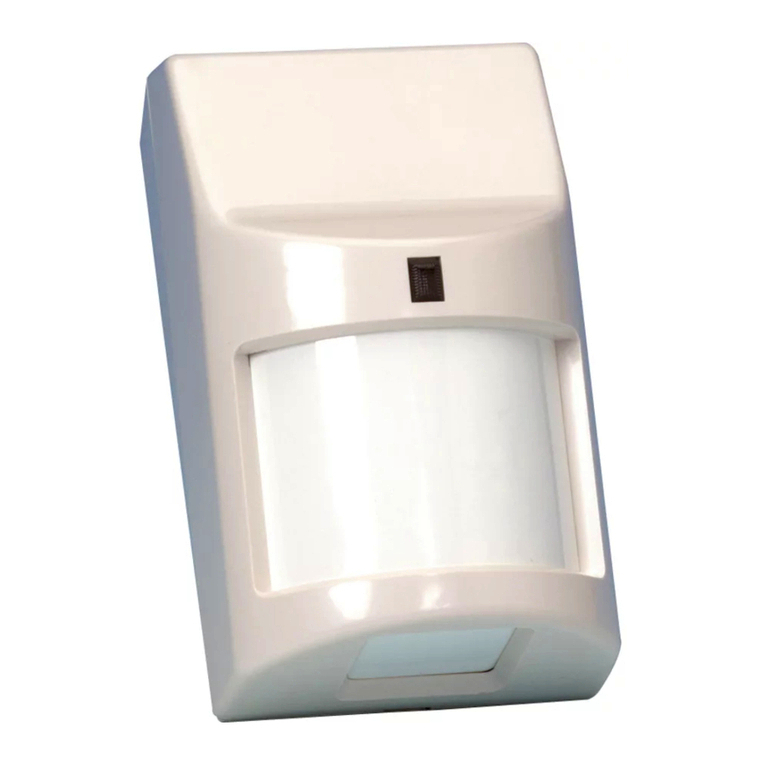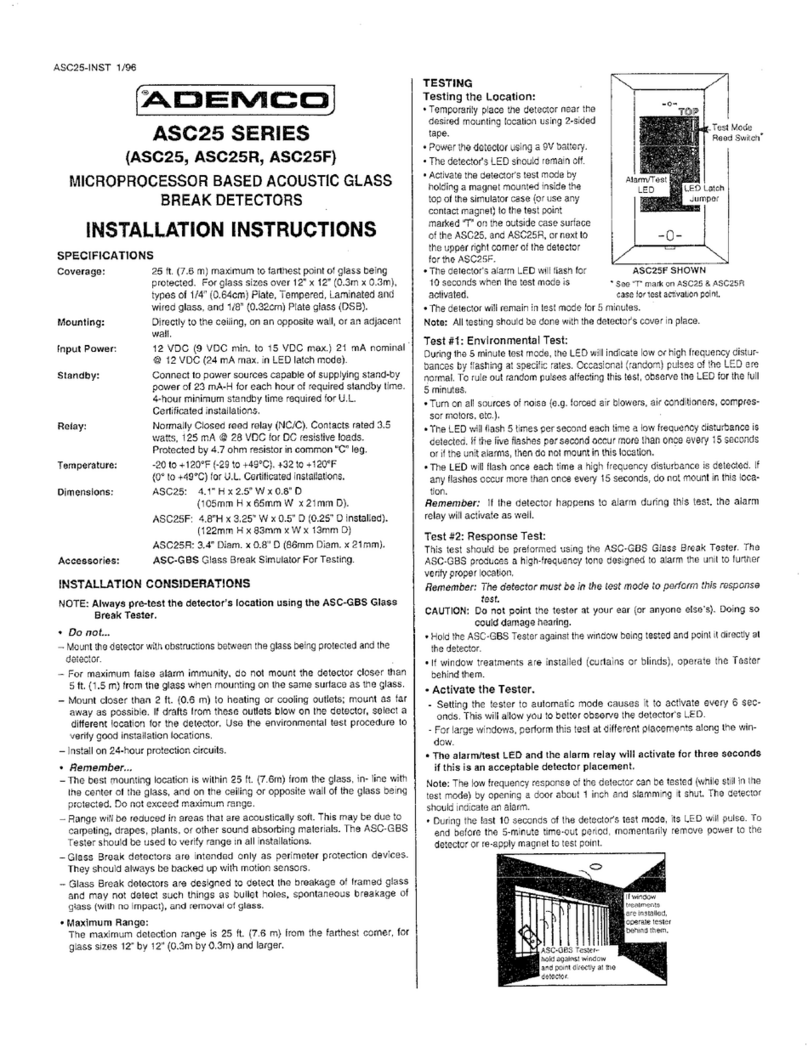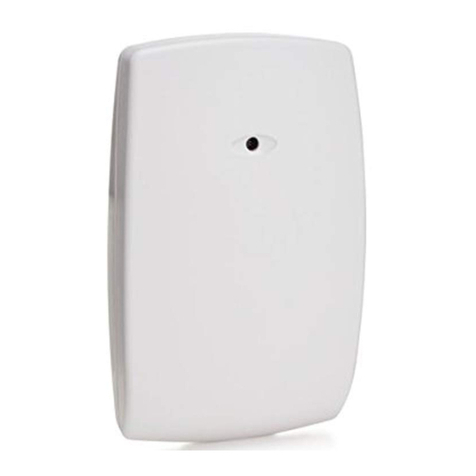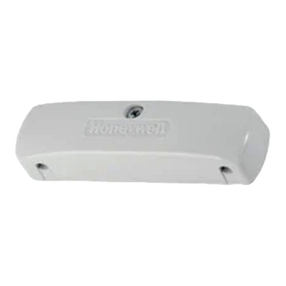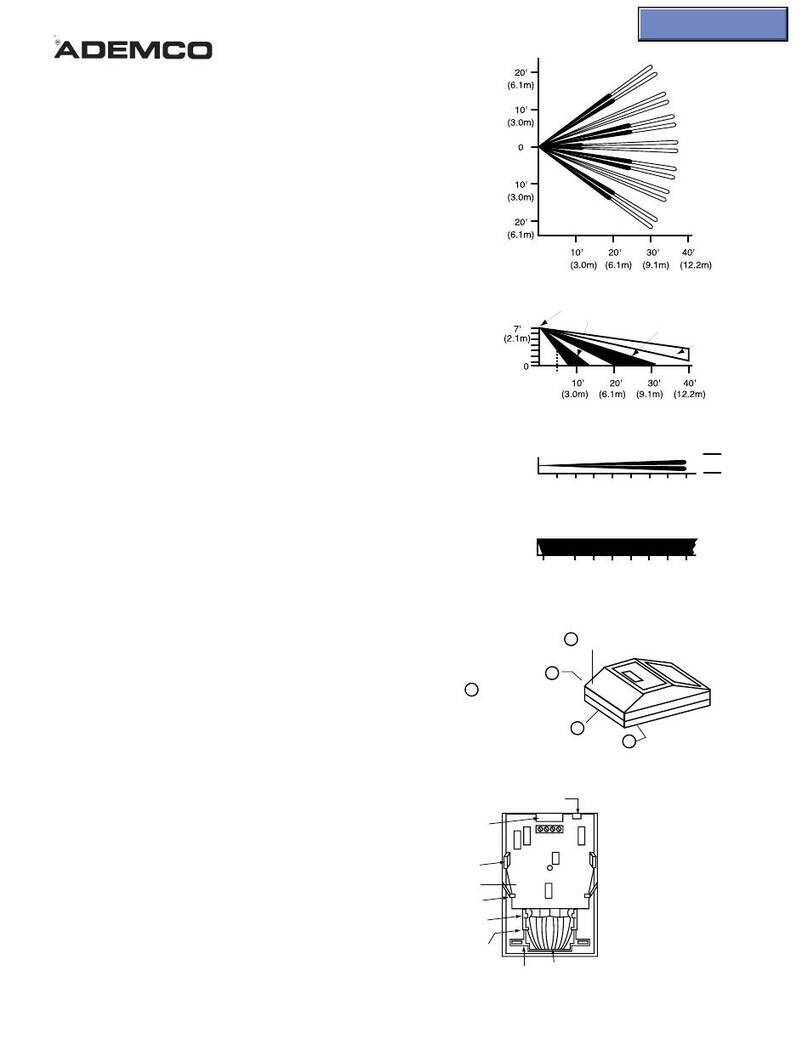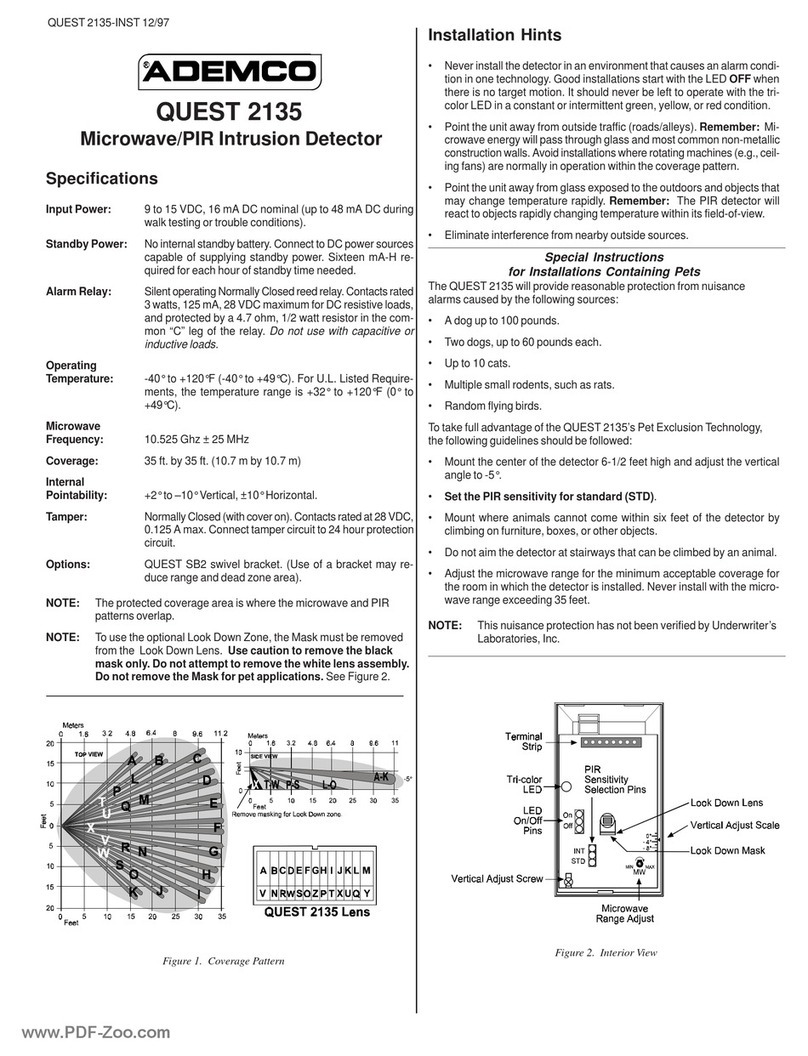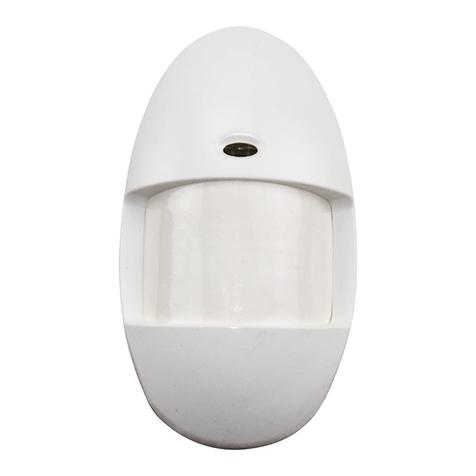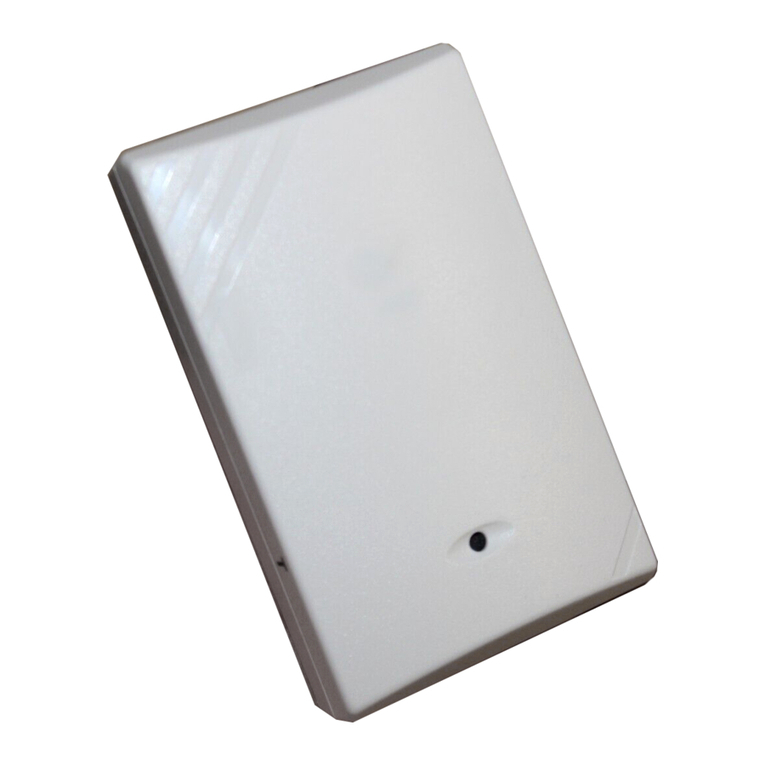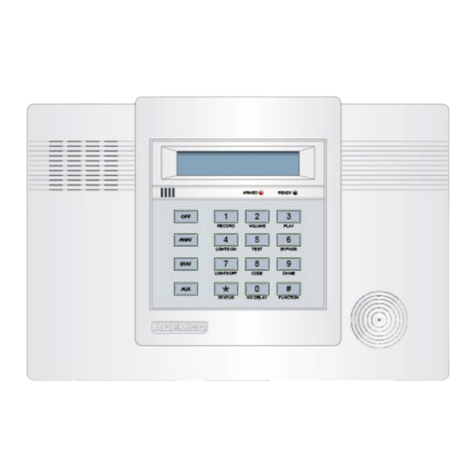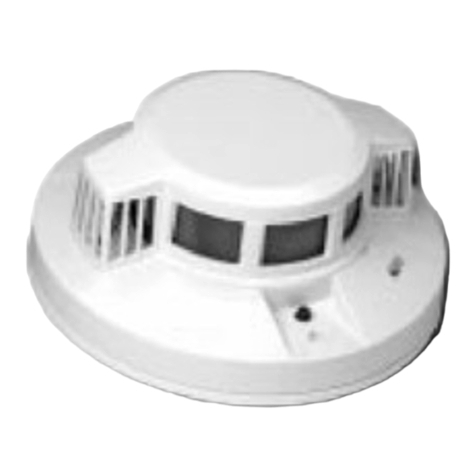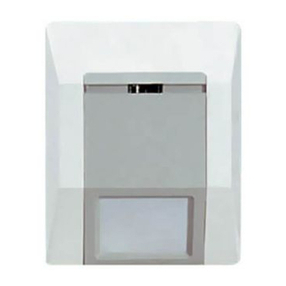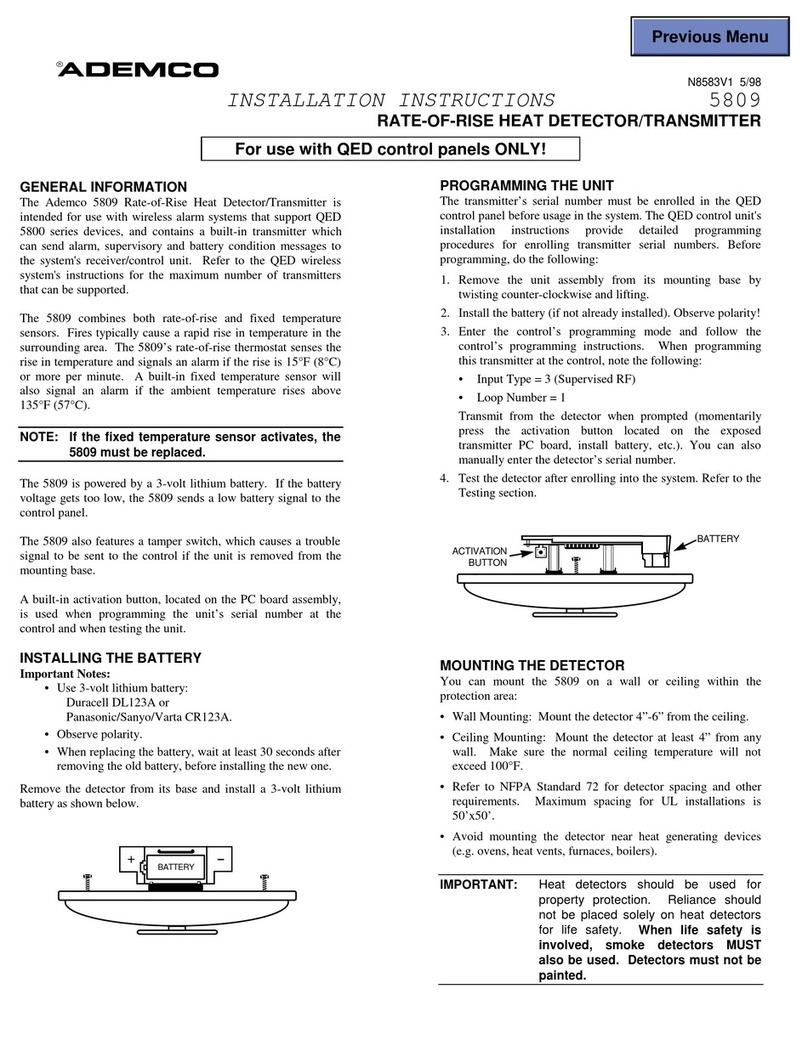lnpul Voltage:
cumnt Drain:
Standby Capablllty~
6-1lV peak to peak at polling
loop terminals.
Lessthan 1 mA (LED in-
active), 6 mA appror (LED
active)
Power source should be cap-
able of at least 4 hours of bat-
tery standby.
Opemting Tompemtum: 329 - 122’F (0% - 50%).
Opemtlng
Huntldltr:
Up to 85%RH (max.), non-
condensing.
DlmMslom 3-w x 3-llll6”H x I-55-Q
Net Wolghi (76mm x 94mm x 36mm).
3.3 02 (93.5grams).
MAINTAINING PROPER OPERATION
In order to maintain the detector in proper working
condition. it is important that the following be
observed by the user.
1. Power should be provided at all times. Loss of power
to the unit will result in the unH’s lailure to operate.
The unit’s DC source should have standby power
available for at least 4 braof operation during
emergencies.
2. Units should never be m-aimed or relocated without
the advice or assistance of the alarm service
company.
3. The physical surroundings of the protected area
should not be changed. If furniture or stock is
moved. or air conditioning or additional heating is
installed, the system may have to be readjusted by
the alarm service company.
4. Walk teatsshould be conducted frequently (at least
weekly) to confirm continued proper coverage by
each detector.
WARNING
THE LIMITATIONS OF THIS PASSIVE INFRARED MOTION DETECTOR
While the Intrusion Detector is a highty reliable
intrusion detection device, it does not offer guaran-
teed protection against burglary. Any Intrusion
Detection device is subject to compromise or fail-
ure to warn for a variety of reasons:
l
Passive Infrared Motion Detectors can only
detect intrusion within the designed ranges as
diagmmmed in this installation manual.
l
Passive tnfrared Motion Detectors do not provide
volumetric area protection. They do create multi-
ple beams of protection. and intrusion can only
be detected in unobetructed areas covered by
those beams.
l
Passive Infrared Detectors cannot detect motion
or intrusion that takes place behind walls. cell-
ings. loon. closed doom, glass perW8am. gtaw
doors. or windows.
0 Mechanical tampering, masking, painttng or
spraying of any material on the mtrrors. windows
or any part of the optical system can mducs the
detection ability of the PassiveInfnmd Motion
Detector.
l
Passive Infrared Detectom sense changes in
tempemture; however. as the ambient tempera-
ture ot the protected ares approaches the
temperature mnge of gO*to tO6V (32” to 40’ C).
the detection petformance can decrease.
l
This Passive lntmred Detector wilt not operate
without appropriate DC power connected to it, or
If the DC power is improperly connected (i.e..
reversedpolarity connections).
l
Passive tntmred Detectom. like other electrical
devices. are subject to component failure. Even
though this equipment is designed to last as tong
as 10yearn.the electronic components could fail
at any time.
We havecited some of the moat common reasons
that a Passive Infmmd Motion Detector can fail to
catch intruaion. Ho-r. this does not imply that
these am the only reasons,and therefore it is
recommended that weekly testing of this type of
unit in conjunction with weekly testing of the
entire atarm ryetern. be performed to ensure that
the detect00 are w-orkingproperly.
tnstalling an alarm system may make one eligible
for lower insurance mtes.
but
an alarm system is
not a substitute tor insumnce. Homeowners, prop-
erty ownem and rentem should continue to insure
their lives and property.
Wecontinue to develop new and improved protec-
tion devices. Usem of alarm systems owe it to
themselves and their loved ones to learn about
these developments.
5
